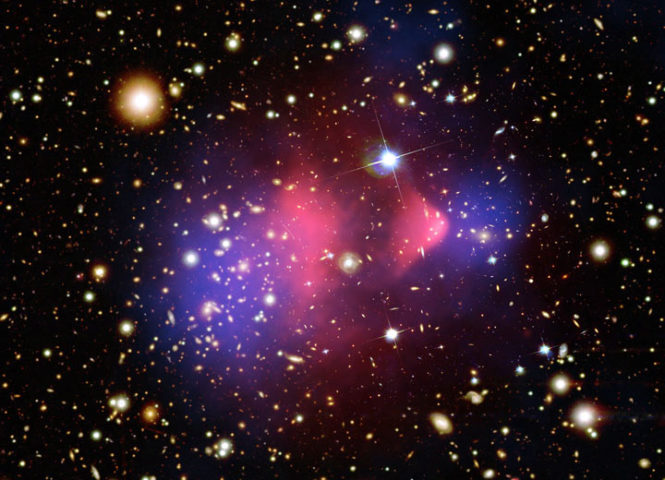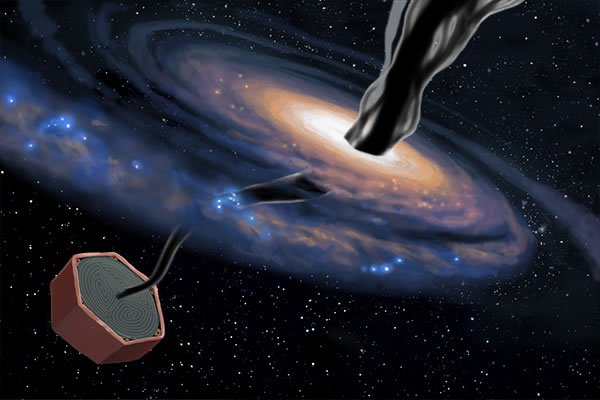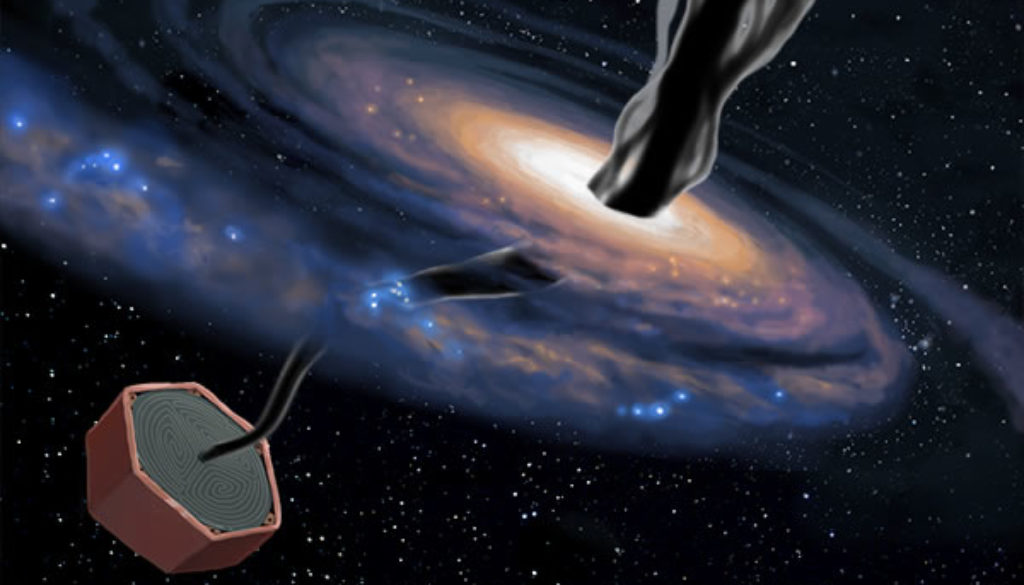CDMS Result Covers New Ground in Search for Dark Matter
Scientists looking for dark matter face a serious challenge: No one knows what dark matter particles look like. So their search covers a wide range of possible traits, including different masses and different probabilities of interacting with regular matter.
Today, scientists with the Cryogenic Dark Matter Search experiment, or CDMS — which includes Texas A&M University high-energy physicists Rupak Mahapatra and David Toback and electrical engineer H. Rusty Harris as principal investigators — announced they have shifted the border of this search down to a dark-matter particle mass and rate of interaction that has never been probed.


“We’re pushing CDMS to as low mass as we can,” says Fermilab physicist Dan Bauer, the project manager for CDMS. “We’re proving the particle detector technology here.”
Their result, which does not claim any hints of dark matter particles, contradicts a result announced in January by another dark matter experiment, CoGeNT, which uses particle detectors made of germanium, the same material as used by CDMS.
To search for dark matter, CDMS scientists cool their detectors to very low temperatures in order to detect the very small energies deposited by the collisions of dark matter particles with the germanium. They operate their detectors half a mile underground in a former iron ore mine in Minnesota. The mine provides shielding from cosmic rays that could clutter the detector as it waits for passing dark matter particles.
Today’s result carves out interesting new dark matter territory for masses below 6 GeV. The dark matter experiment Large Underground Xenon, or LUX, recently ruled out a wide range of masses and interaction rates above that with the announcement of its first result in October 2013.
Scientists have expressed an increasing amount of interest of late in the search for low-mass dark matter particles, with CDMS and three other experiments — DAMA, CoGeNT and CRESST — all finding their data compatible with the existence of dark matter particles between 5 and 20 GeV. But such lightweight dark-matter particles are hard to pin down. The lower the mass of the dark-matter particles, the less energy they leave in detectors, and the more likely it is that background noise will drown out any signals.
Even more confounding is the fact that scientists don’t know whether dark matter particles interact in the same way in detectors built with different materials. In addition to germanium, scientists use argon, xenon, silicon and other materials to search for dark matter in more than a dozen experiments around the world.
“It’s important to look in as many materials as possible to try to understand whether dark matter interacts in this more complicated way,” says Adam Anderson, a graduate student at MIT who worked on the latest CDMS analysis as part of his thesis. “Some materials might have very weak interactions. If you picked one, you might miss it.”
Scientists around the world seem to be taking that advice, building different types of detectors and constantly improving their methods.
“Progress is extremely fast,” Anderson says. “The sensitivity of these experiments is increasing by an order of magnitude every few years.”
Texas A&M’s CDMS group features Mahapatra, Toback — a recent addition to the group who brings solid experience in analysis and data acquisition techniques from his previous decades of collider-based research at the Fermilab Tevatron — and Harris, a professor in the Department of Electrical & Computer Engineering who holds a joint appointment in the Department of Physics and Astronomy. The Texas A&M trio has long been active in the collaboration, playing lead roles in detector technology, data collection, data quality monitoring and analysis.
“The future is very bright for CDMS and the Texas A&M group as we look to the next-generation experiment with bigger and better detectors, and hopefully a discovery of dark matter,” Mahapatra says.
Currently the George P. and Cynthia Woods Mitchell Institute for Fundamental Physics and Astronomy-based Texas A&M group is designing and fabricating new detectors for the experiment’s next phase — proposed to be located in the Canadian SNOLab mine — within in their dedicated semiconductor detector fabrication laboratory on the Texas A&M campus. Mahapatra says this facility has demonstrated dramatic improvement in both quality and cost of these cryogenic detectors, providing a path toward more plausible large-scale expansion of the experiment.
The collaboration has detailed its latest results in a paper published in arXiv. Their work — beginning with CDMS and CDMS-II and continuing with SuperCDMS and GEODM — is funded by the DOE and the National Science Foundation as well as the Natural Sciences and Engineering Research Council of Canada (NSERC).
To learn more about Texas A&M’s involvement with the collaboration and related research, visit http://faculty.physics.tamu.edu/mahapatra/.
-aTm-
Contact: Shana K. Hutchins, (979) 862-1237 or shutchins@science.tamu.edu or Dr. Rupak Mahapatra, (979) 229-4196 or mahapatra@physics.tamu.edu
The post CDMS Result Covers New Ground in Search for Dark Matter appeared first on Texas A&M College of Science
